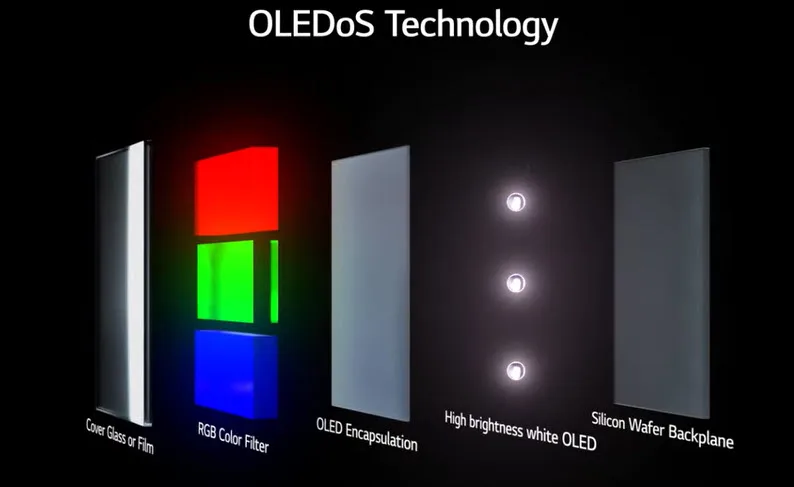At the Deep Tech Forum hosted by TheElec, Lee Jung-il, team leader of LG Display’s Best OLEDoS (BO) team, discussed the future of display technologies for virtual reality (VR) and augmented reality (AR) devices. According to Lee, LG Display believes that OLED on silicon (OLEDoS) technology holds the greatest potential for VR devices, while LED on silicon (LEDoS) technology is expected to become mainstream for AR devices.

Lee outlined four key technologies for microdisplays in extended reality (XR) devices: OLEDoS, LEDoS, liquid crystal on silicon (LCoS), and digital light processing (DLP). Transparent glasses are typically used for AR devices, allowing the eyes to remain visible, while mixed reality (MR) devices share similar technology with VR devices. Lee clarified that Apple’s Vision Pro, previously categorized as an MR device, actually falls under the VR category as it employs opaque glasses.
While LCoS and DLP technologies have been used in XR devices, Lee emphasized that their weightiness makes them impractical for consumer devices. Microsoft’s Hololens, for example, uses LCoS, while Hololens 2 relies on DLP. According to Lee, the bulky nature of Hololens blurs the distinction between AR and VR devices, indicating that these technologies may not be viable options moving forward.
Regarding LEDoS technology, Lee highlighted ongoing research focused on using blue LEDs in combination with red and green quantum dots (QDs). The blue LED passes through red and green QD filters to produce the desired colors. For commercialization of this technology, the QD filter must be thin, and suitable materials need to be developed to achieve the necessary micro patterns. Additionally, Lee mentioned that there are advancements in stacking RGB LED chips into a single space for LEDoS.
In terms of future advancements, LG Display expressed uncertainty about the timeline for the introduction of AR products with brightness exceeding 10,000 nits in the market. Lee estimated that such products would likely take at least five years to materialize.

